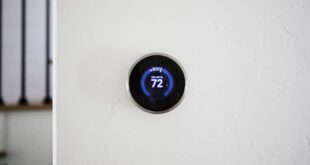A pretty big wad of money – $40 billion – is hiding somewhere inside the lights, AC, thermostats, furnaces and fans of our offices, stores, hospitals and schools.
That’s the amount of money the federal government estimates we can save annually by reducing energy use in commercial buildings 20 percent by 2020. To achieve the goal, the Obama administration in 2011 initiated the Better Buildings Challenge, a way to encourage investment, share information and create demonstration projects that save energy.
It’s no small effort. Finding energy savings in buildings can be a Where’s Waldo-style mission. Hidden from view are faulty valves and switches, lighting controls that don’t jive with human activity, and malfunctioning appliances that suck up energy.
But the federal program – along with other state, city and corporate efforts – are leading to intriguing technologies and demonstration projects.
In Seattle, a building that describes itself as the world’s greenest, opened April 22. The 50,000 square-foot Bullitt Center is designed to be 83 percent more efficient than is typical. But it isn’t stopping there. Its owners want to achieve complete energy and water self-sufficiency over a year.
The Bullitt Center is engaging in a certification process called the Living Building Challenge, one of the toughest badges of honor for a building to achieve. The standard goes beyond just saving energy and water, and requires that the building helps restore the natural environment.
Of course the Bullitt Center has solar panels, occupancy sensors and data displays that show energy use and emissions – all that you would expect of a contemporary green building. But it also has other interesting design elements. The building’s mechanical workings are in plain view so everyone inside can better see what’s going on. Ninety percent of the lighting is natural. Tenants must adhere to electricity budgets as a term of the lease, and they share in any net metering profits the building accrues. The structure is heavy timber, not the usual steel or concrete of most office buildings. Water will come only from rain treated onsite.
The design nudges occupants toward energy conservation in various ways. For example, the stairway offers spectacular views meant to discourage use of the elevator. “There is no such thing as a net-zero building, only net-zero occupants,” said Luke McKneally, solar engineering project manager, who was quoted in a Bullitt Center blog by Brad Khan.
Boston’ FirstFuel
The US would achieve the 20 percent federal goal quickly if its cities had blocks and blocks of Bullitt Center-type structures. But, alas, most of our buildings are well, already built. So how do we bring efficiency to the remaining 5 million or so commercial buildings?
FirstFuel Software, located outside of Boston in the town of Lexington, has been circulating some impressive findings in recent months indicating that ‘zero-touch audits’ offer a path to big savings in existing buildings. The company applies advanced analytics to see where a building is wasting energy.
What’s unique here is that FirstFuel never sets foot on the building’s premises. Instead, the company uses interval meter data supplied by the local utility and some other basic information about the building.
Working with National Grid, PG&E and other large utilities and federal agencies, FirstFuel says it has found that buildings can achieve a large amount of savings through operational improvements at little or no cost to building owners.
FirstFuel uncovered $12 million in operational savings when it applied its Remote Building Analytics to various kinds of buildings totaling 60-million square feet. Extrapolating from its work thus far, FirstFuel estimates that US buildings could save $17 billion in energy costs through operational improvements.
Some of the most common inefficiencies are the most difficult to uncover, according to FirstFuel. For example, the company found – to the surprise of building managers – that heating and cooling systems were often working at odds. Both would operate at the same time, as the building transitioned from one system to the other to maintain a certain temperature. This set the AC in overdrive to compensate for the hot air from the heating system.
“We position ourselves as the folks that can find operational savings that other methods can’t,” said Erik Mazmanian, FirstFuel Software’s marketing and strategy manager, in a recent interview.
The company sees its platform as a way to achieve scale in energy savings. Rather than marketing to building managers, FirstFuel is focusing on utilities. In many states, utilities must achieve a specified level of energy efficiency each year under state rules. The FirstFuel platform allows them to study swaths of buildings within their service territory and determine where they can achieve the greatest bang for their buck.
FirstFuel analytics do not replace the conventional energy audit – the hands-on work of engineers and auditors working on a building retrofit, Mazmanian said. Instead, it acts as a kind of building “score keeper,” using analytics to pinpoint operational inefficiencies and then track results when they are corrected.
Both projects – the Bullitt Center and FirstFuel’s analytics – are examples of just two of many initiatives under way to bring greater efficiency to our buildings. To help the effort, the US Department of Energy is beta testing a building performance database with actual statistics on tens of thousands of commercial and residential buildings. In addition, more than 110 organizations, representing two billion square feet, have pledged to help reach the 20 percent savings goals. Some recent additions include Sprint, Macy’s and Johnson Controls and the city of Houston.
So the $40 billion pot of megawatts at the end of the electric rainbow may not be easy to reach – but the building sector has set off on the quest.
Elisa Wood is a long-time energy writer, whose blogs have been picked up by CNN, the New York Times, Reuters and the Wall Street Journal. Her work can be found at http://www.realenergywriters.com/elisa-wood/
 Alternative Energy HQ solar power for homes, wind energy, and bio fuel issues
Alternative Energy HQ solar power for homes, wind energy, and bio fuel issues










